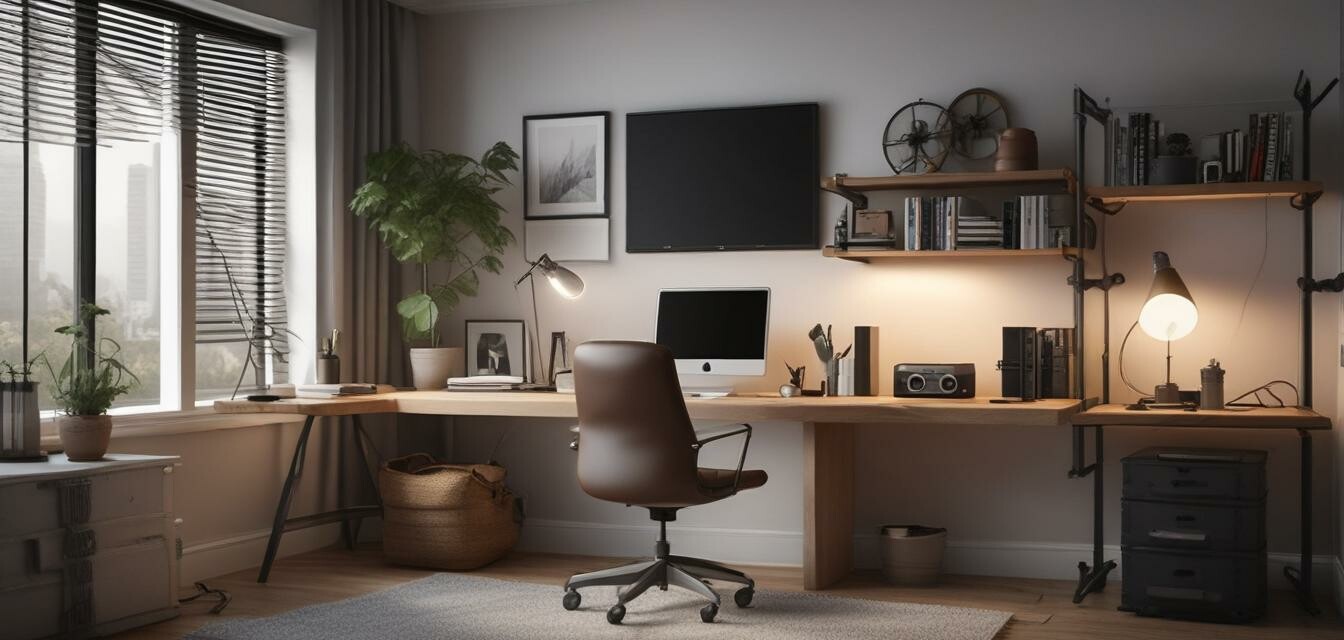
The growing popularity of remote work furniture
Key Takeaways
- The demand for remote work furniture has surged significantly in recent years.
- Innovative designs and sustainable materials are becoming essential in home office setups.
- Ergonomics, functionality, and aesthetics are major considerations for consumers.
- Multi-monitor setups and adjustable desks are among the top trends shaping the market.
- Investing in quality remote work furniture can enhance productivity and comfort.
As remote work becomes an increasingly viable option for many professionals, the demand for specific furniture designed to meet the needs of home office environments is on the rise. In 2025, we are witnessing a transformation in how individuals approach their workspaces, leading to innovative designs and the use of sustainable materials. This article will explore the trends and materials shaping the current landscape of remote work furniture.
Why remote work furniture is gaining traction
The shift towards remote work has been accelerated by various factors, including the pandemic and the proliferation of digital technologies. Employees now prioritize comfort and functionality in their workspaces, which has stirred interest in furniture specifically designed for remote jobs. Some reasons for this growing popularity include:
- Flexible work arrangements: As corporate policies evolve to accommodate hybrid and fully remote work models, individuals are re-thinking their home office setups.
- Improved productivity: Quality furniture can provide better support, minimize distractions, and create an environment conducive to focused work.
- Health and wellness considerations: With people spending longer hours at home, the emphasis on ergonomic furniture has never been greater.
- Long-term investment: Home office furniture is increasingly seen as a wise investment as more professionals opt for remote work.
Trends in remote work furniture design
As the demand for remote work furniture continues to grow, we see several key design trends emerging. Here are some of the most popular trends influencing home office setups in 2025:
| Trend | Description |
|---|---|
| Ergonomics | Furniture designed to support good posture and comfort during long working hours, including ergonomic chairs and height-adjustable desks. |
| Multi-monitor setups | Special stands, mounts, and desks that accommodate several monitors to boost productivity and improve workflow. |
| Sustainable materials | Increased use of eco-friendly materials, emphasizing durability and reduced environmental impact. |
| Minimalist design | Simple and functional designs that declutter workspaces and promote a focused environment. |
| Smart technology integration | Furniture equipped with smart technology such as wireless charging capabilities, integrated speakers, and Bluetooth connectivity. |
Materials shaping the future of remote work furniture
The materials used in remote work furniture also play a significant role in its appeal. Here are some of the primary materials that are shaping the landscape:
- Bamboo: An eco-friendly material that is gaining popularity due to its durability and sustainability.
- Recycled plastics: Furniture crafted from recycled materials is not only stylish but also helps reduce waste in landfills.
- Engineered wood: Cost-effective and versatile, engineered wood is commonly used in contemporary designs.
- Metal frames: Provide stability and a modern look, often seen in stylish desk legs and chair supports.
Expert insights and emerging technologies
Industry experts are consistently sharing insights about the future of home office furniture. Professionals predict that technology will play a larger role in the evolution of workspace designs. This includes furniture that automatically adjusts based on user preferences and the integration of AI-driven solutions to optimize work processes.
Emerging technologies impacting remote work furniture
| Technology | Impact on Furniture |
|---|---|
| AI Integration | Smart desks that adjust according to user data to promote better work habits. |
| IoT-enabled devices | Furniture that connects to other smart devices in the home, enabling seamless work-from-home experiences. |
| Virtual Reality | Using VR to design and visualize home office setups before purchase, enhancing customer engagement. |
Finding the right remote work furniture for you
When selecting remote work furniture, it's crucial to assess your unique work habits and needs. Here are a few tips to help you find the right setup:
Tips for beginners
- Assess your space: Measure your workspace to determine the best fit for your chosen furniture.
- Consider ergonomics: Choose pieces that promote good posture and comfort.
- Select multi-functional furniture: Look for options that serve multiple purposes, such as desks with built-in storage.
- Prioritize quality: Invest in durable pieces that can withstand daily use.
- Pay attention to style: Ensure your furniture aligns with your personal aesthetic to create an inviting work environment.
Conclusion
The growing popularity of remote work furniture signifies a fundamental shift in how individuals view their work environments. With an emphasis on ergonomics, innovative designs, and sustainable materials, the evolution of home office setups in 2025 is shaping a more productive and comfortable future for remote professionals. Whether you are just starting to build your home office or looking to upgrade your current setup, now is the perfect time to invest in quality remote work furniture that meets your needs.
For more insights into optimizing your home office, check out our other articles on buying guides, setup inspiration, and the latest news and trends in home office technology.